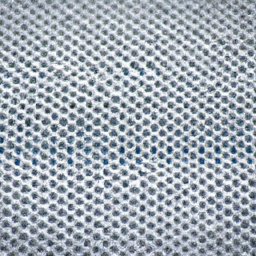Curious about how reverse osmosis removes fluoride from your tap water? Reverse osmosis is a highly effective water purification system that utilizes a semi-permeable membrane to filter out impurities, contaminants, and larger particles. The process involves pre-filtration, where sediment and carbon filters remove larger particles and chemicals, followed by the reverse osmosis stage, where water is forced through the fine membrane, effectively trapping contaminants like salts, heavy metals, and bacteria. After the RO process, the water undergoes post-filtration to remove any remaining taste or odor. With storage in a tank and dedicated faucet delivery, you can have purified water readily available. So, does reverse osmosis remove fluoride? Let’s find out!
How Does Reverse Osmosis Remove Fluoride?
Introduction
In our quest for clean and purified drinking water, one particular contaminant that often raises concerns is fluoride. Fluoride is commonly added to public water supplies to promote dental health, but some individuals prefer to remove it from their drinking water. One highly effective method of fluoride removal is through the use of a reverse osmosis (RO) water filter. In this article, we will explore how reverse osmosis works to remove fluoride and why it is a popular choice for those seeking fluoride-free water.
Understanding Fluoride
Before delving into the specifics of how reverse osmosis removes fluoride, it is important to have a basic understanding of what fluoride is. Fluoride is a naturally occurring mineral that can be found in various water sources. It is often added to public water supplies as a preventive measure against tooth decay. While fluoride is generally considered safe at low levels, some individuals may prefer to reduce or eliminate their exposure to it.
Why Remove Fluoride from Water?
There are several reasons why individuals may choose to remove fluoride from their drinking water. Some people may have medical conditions or sensitivities that make them more susceptible to the potential side effects of fluoride. Others may simply prefer to have more control over the substances they consume. Additionally, certain industries and processes may require fluoride-free water for specific applications. Regardless of the reason, reverse osmosis offers an effective solution for removing fluoride from water.
Reverse Osmosis and Fluoride Removal
reverse osmosis is a water purification method that utilizes a semi-permeable membrane to remove impurities and contaminants from water. The principle behind reverse osmosis is based on creating a pressure difference across the membrane, which allows pure water molecules to pass through while blocking the passage of larger molecules and contaminants. Fluoride molecules are larger than water molecules and are effectively blocked by the semi-permeable membrane, resulting in the removal of fluoride from the water.
Semi-Permeable Membrane
The key component of a reverse osmosis system is the semi-permeable membrane. This membrane is specially designed to allow the passage of water molecules while preventing the passage of larger molecules and contaminants. In the case of fluoride removal, the membrane effectively blocks the fluoride molecules from passing through, ensuring that the purified water is free from fluoride.
Fluoride Removal Efficiency
Reverse osmosis is known for its high efficiency in removing contaminants, including fluoride. The exact percentage of fluoride removal will vary depending on the specific system and its configuration, but most reverse osmosis systems can achieve a fluoride removal rate of over 90%. This high efficacy makes reverse osmosis a reliable choice for those seeking fluoride-free drinking water.
Pre-filtration
Before water reaches the semi-permeable membrane, it goes through a pre-filtration stage. This stage typically involves the use of sediment filters to remove larger particles such as sand and silt. Additionally, carbon filters are used to remove chlorine and other chemicals that could potentially damage the reverse osmosis membrane. By removing these larger particles and chemicals, the pre-filtration stage helps to prolong the lifespan of the reverse osmosis system and ensures optimal fluoride removal.
Post-filtration
After the reverse osmosis process, the purified water usually undergoes another stage of filtration known as post-filtration. This step often involves the use of carbon filters to further polish the water and remove any lingering taste or odor. The post-filtration stage is essential in providing clean, great-tasting water that is free from any residual contaminants.
Other Contaminant Removal
In addition to fluoride, reverse osmosis also effectively removes a wide range of other contaminants from water. This includes heavy metals, bacteria, viruses, salts, chemicals, and many others. The combination of the semi-permeable membrane and multiple filtration stages ensures that the final product is clean, pure, and free from various impurities.
Considerations
While reverse osmosis is highly effective in removing fluoride and other contaminants, there are a few considerations to keep in mind. Firstly, the process of reverse osmosis can be relatively slow compared to other filtration methods. This is due to the pressure required to force water through the membrane and the need for multiple filtration stages. However, most reverse osmosis systems come with a storage tank to ensure a continuous supply of purified water.
Another consideration is the waste water produced during the reverse osmosis process. For every gallon of purified water produced, a certain amount of water containing concentrated contaminants is flushed away. This waste water, known as brine, should be properly disposed of to minimize environmental impact.
In conclusion, reverse osmosis is a highly effective method for removing fluoride from drinking water. By utilizing a semi-permeable membrane, reverse osmosis systems can achieve a high level of fluoride removal, along with other contaminants. With proper pre-filtration, post-filtration, and consideration of waste water, reverse osmosis provides a reliable solution for those seeking fluoride-free water.

